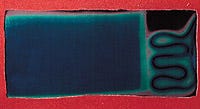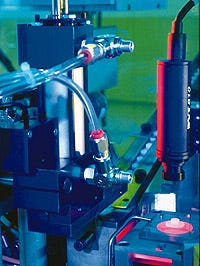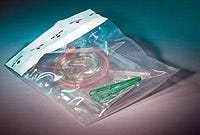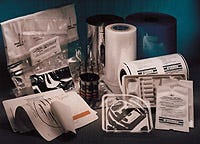June 1, 1998


Heating Elements
Electroconductive Textile Provides Uniform Heat Distribution
Material regulates its temperature
DEVELOPERS OF PATIENT-WARMING products now have an alternative way to deliver and maintain heat. When combined with simple circuitry, a carbonized, conductive woven textile provides even heat dissipation and maintains its set temperature within ±0.2°C. Developed by Gorix Ltd. (Birkdale, Southport, UK), Gorix eliminates the problem of hot and cold spots that can occur with wire-matrix element heating. The uniform distribution and dissipation of heat from the surface allows the material to be used in close contact with the object being heated.
Potential uses for Gorix include patient bedding, wound care, solution-warming, patient-comfort, and circulatory-care products. Because the material is x-ray opaque, it may be used as a heating element in operating tables or alpine recovery stretchers. Warming blood and tissue samples with Gorix heating elements is under research.
Commenting about promising medical uses of Gorix, its inventor Robert Rix says, "It is especially well suited for applications where temperature management is critical—infant incubators is a good example—or where precise control is needed. The material could be used to produce a low-voltage heated mattress for geriatrics, for instance. Also, it could be encapsulated to make it waterproof."
The material is made from a polymeric fiber that is baked at a low temperature and then woven and baked again. After this initial process, the material can be laminated or encapsulated within other materials. It can be activated by low voltage and can draw power from sources such as standard wall outlets and rechargeable battery packs.
Another prime characteristic of the material is a linear change in resistivity as a response to temperature change. This means that the hotter Gorix gets, the lower its electrical resistance becomes and the easier it is for current to flow within the material. This capability enables it to be used as a heating element and as a temperature sensor. When employed in a baby incubator, for example, the Gorix material can act as a virtually self-regulating temperature management system.
The product was recently selected as one of four winners of the Millennium Product Award. Modernistic Inc. (St. Paul, MN) will act as an approved converter of the Gorix product in the United States.
For more information, contact Modernistic Inc. at 612/291-7650.

Inspection
Image Acquisition Systems Cut Inspection Costs
Updated software package simplifies setup and operation
HIGH-SPEED INSPECTION systems employ photoelectric sensors and Windows-based software to provide the features of a machine vision system at less than half the usual price, according to the manufacturer.
SmartImage sensor systems use CCD technology to capture product images and transfer the pixel data to the RAM (random-access memory) of the system's embedded processor. Once the data is in RAM, the system uses FrameWork 1.3 software to compare the image information to predetermined criteria established during inspection setup.
System developer DVT Corp. (Norcross, GA) upgraded FrameWork 1.3 to deliver vital feedback for statistical process control and motion control. The FrameWork Windows-based interface employs a point-and-click matrix to streamline logic control.
The sensors provide information such as target trajectories, fiducial locations, critical measurements, and bar code identification. These operations can be combined with inspections, and all data can be output to SPC software packages for analysis.
For more information, contact DVT Corp. at 770/449-4960.

Packaging
Packaging Film Exhibits Great Strength with Less Weight
While thinner than conventional film, it is up to 250% stronger
HIGH STRENGTH, LIGHT WEIGHT, and durability are key features of a linear low-density polyethylene (LLDPE) film for medical packaging. When produced at a 3-mil gauge, ShieLLD film demonstrates 150% more impact strength than 4-mil conventional LLDPE film, according to Philadelphia-based manufacturer Perfecseal. At 4 mil, the film's impact strength is 238% more than other types of 4-mil LLDPE, with 250% greater tear strength, according to Perfecseal.
By using 3-mil ShieLLD film in place of 4-mil conventional LLDPE, device manufacturers can use less material per package and thereby reduce overall packaging and decrease freight costs. "Downgauging from a 4-mil conventional film to 3-mil ShieLLD automatically results in cost savings because ShieLLD yields 25% more packaging material," says Terry Collins, product manager, converting, for Perfecseal.
The resins are manufactured using a new catalyst technology for narrow or controlled molecular weight distribution of the polyethylene polymer, resulting in greater strength properties in the finished film. Because conventional film extrusion machinery is not capable of processing this new resin, Perfecseal has invested in specialized equipment, manufacturing processes, and technical expertise to effectively process it into blown film.
Uses for ShieLLD films include header bag packaging for large, bulky devices or heavy trays containing a variety of supplies and instrumentation.
For more information, contact Perfecseal at 215/673-4500.
You May Also Like


